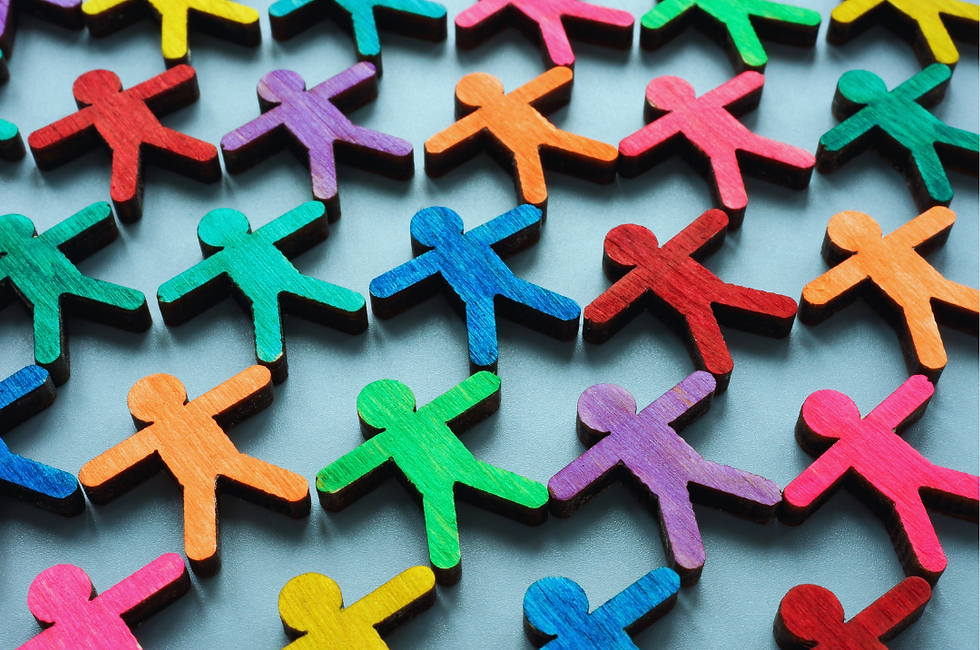The DEI Divides
- Rebecka Bihm Lester

- Aug 29, 2024
- 4 min read

When I began brainstorming for this blog, the first topic that popped into my head was Diversity, Equity, and Inclusion (DEI). Why? Maybe it was because it has become a buzz phrase, flying across the lips of die-hard supporters aiming to blanket the concept over organizations and businesses, and yet simultaneously weaponized by radical fringe groups to amplify their blatant racist agendas. Either way, knowing that I have personally written DEI policies I believe in, I felt an obligation to explore further. This is what I found:
The Basics
Here are some widely accepted definitions: Diversity is embracing the differences everyone brings to the table, including race, age, ethnicity, religion, gender, sexual orientation, physical ability, and other aspects of social identity. Equity is treating everyone fairly and providing equal opportunities. Inclusion is respecting everyone’s voice and creating a culture where individuals from all backgrounds feel encouraged to express their ideas and perspectives. So far so good, right? So why was it created?
And the concept isn’t new. It has been around for decades. With origins around the Civil Rights Movement in the ’60s, discrimination lawsuits piling up with the Equal Employment Opportunity Commission (EEOC) in the ‘70s, and corporate deregulation policies that said companies should be addressing discrimination internally in the 1980s… We have all seen DEI efforts play out.
The Good
Nonprofits in the US have a charitable mission that sets them apart from other sectors. However, they reflect a society where historically marginalized communities (Based on race, gender, sexual identity, age, and disability) are still disproportionately affected by systemic inequities. Nonprofits that consider this can effectively remedy these inequities in their workplaces and in the communities they serve. A DEI conscience approach benefits organizations by preventing the perpetuation of dynamics and exclusionary practices that contribute to inequities in our communities and society. It also fosters genuine engagement and partnership with underserved communities by centering constituents as leaders and experts in addressing community conditions, rather than positioning nonprofits as the sole "saviors" of these communities.
Most employees support diversity, with overall sentiment on diversity 52% positive and 31% negative. DEI can also positively impact various aspects of an organization's performance. This includes attracting top talent, enhancing the quality of decision-making by incorporating diverse perspectives, gaining deeper insights into customer needs, fostering innovation, and boosting employee motivation and satisfaction.
Still sounds good to me? So, what am I missing?
The Bad
After the civil unrest that followed the death of George Floyd in 2020, many organizations hastily put together DEI strategies. Unsure of where to start, companies implemented basic plans, believing they were moving in the right direction. Some progress was made as a result, but most failed to achieve lasting, meaningful change. Although their intentions were good, many didn't consider how to sustain DEI efforts long-term or how personnel would perceive these initiatives. Instead, they quickly implemented training programs without focusing on changing the culture or systems. These knee-jerk reactions have led to defensiveness and insecurity around DEI, fueling backlash and making it feel like a zero-sum game for many.
But that’s not all…
The Ugly
According to a recent report from Every Level Leadership, a workplace DEI consulting firm, some 72% of Black women have to code-switch in the office as a strategy for career advancement. More than half of respondents said they feel the burden of teaching their co-workers about diversity, equity, and inclusion. But if you’re a Black woman seeking to facilitate these changes in the office, doing it the wrong way could harm your career, says Ericka Hines, the founder of Every Level Leadership and a diversity, equity, and inclusion (DEI) expert. “There is data out there that says when women and people of color bring up issues around DEI, the impact is that they can be considered troublemakers.”
There it is. The awful truth is that so many companies have tasked people of color with figuring it out themselves…without support, without recognition that DEI can only truly work on a systemic level, without regard to the message they are sending. DEI has come so far from its roots in racial and economic justice that they have watered down DEI to be primarily about learning to get along and celebrating different cultures. This approach keeps those in power comfortable and stays clear of addressing power dynamics and power sharing.
So, where do we go from here?
Well, it sure isn’t entertaining the idea that DEI is the problem. DEI programs aren't discriminatory, and the fact that their implementation has led to some people (read: White people) feeling excluded only brings to mind one of my favorite quotes:
“When you’re accustomed to privilege, equality feels like oppression.”
Franklin Leonard.
Perhaps the best way forward is to focus on systemic and institutional efforts that need time to redress centuries of injustices faced by people of color in the US. This will take dismantling and rebuilding systems from the inside out, with DEI in every department and board room, and with the knowledge that advancing DEI is not just one of those “jobs for people of color”.
Rebecka Bihm Lester is a Senior Consultant at RSS, where she provides hands-on facilitation and leads fund development projects to support partners in developing and implementing effective strategies to ensure racial and social equity.

Comments